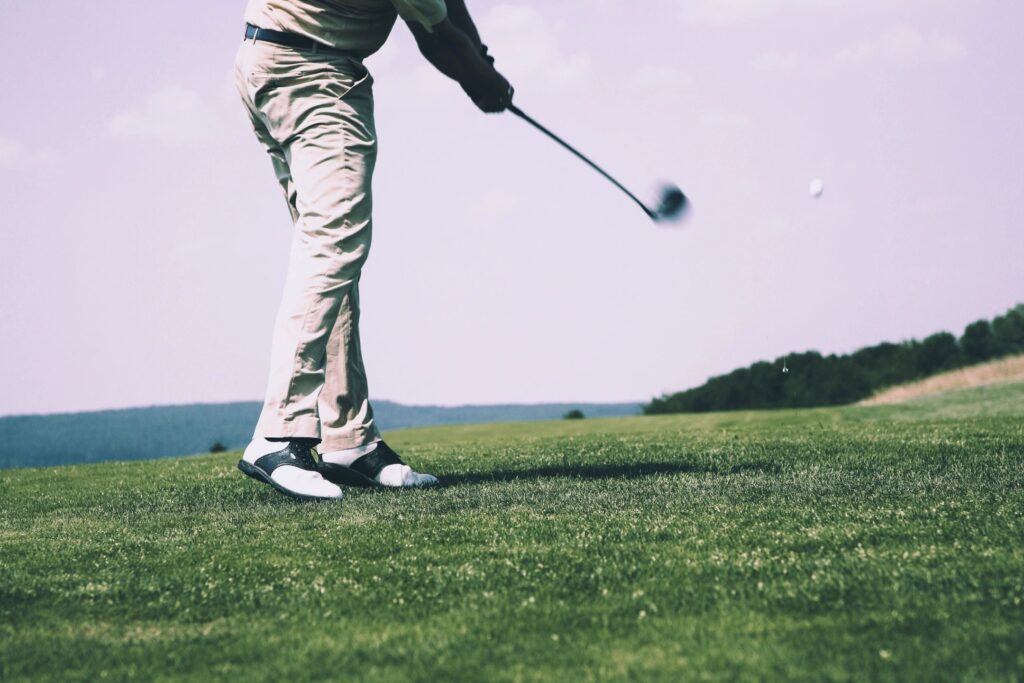
5 Golf Injuries You Can Avoid
Read our list of 5 Golf Injuries you can avoid and play your best game this season.
Did you know:
- among amateurs, golf injuries affect 41% of players
- up to 90% of professional golfers suffer from golf related injuries
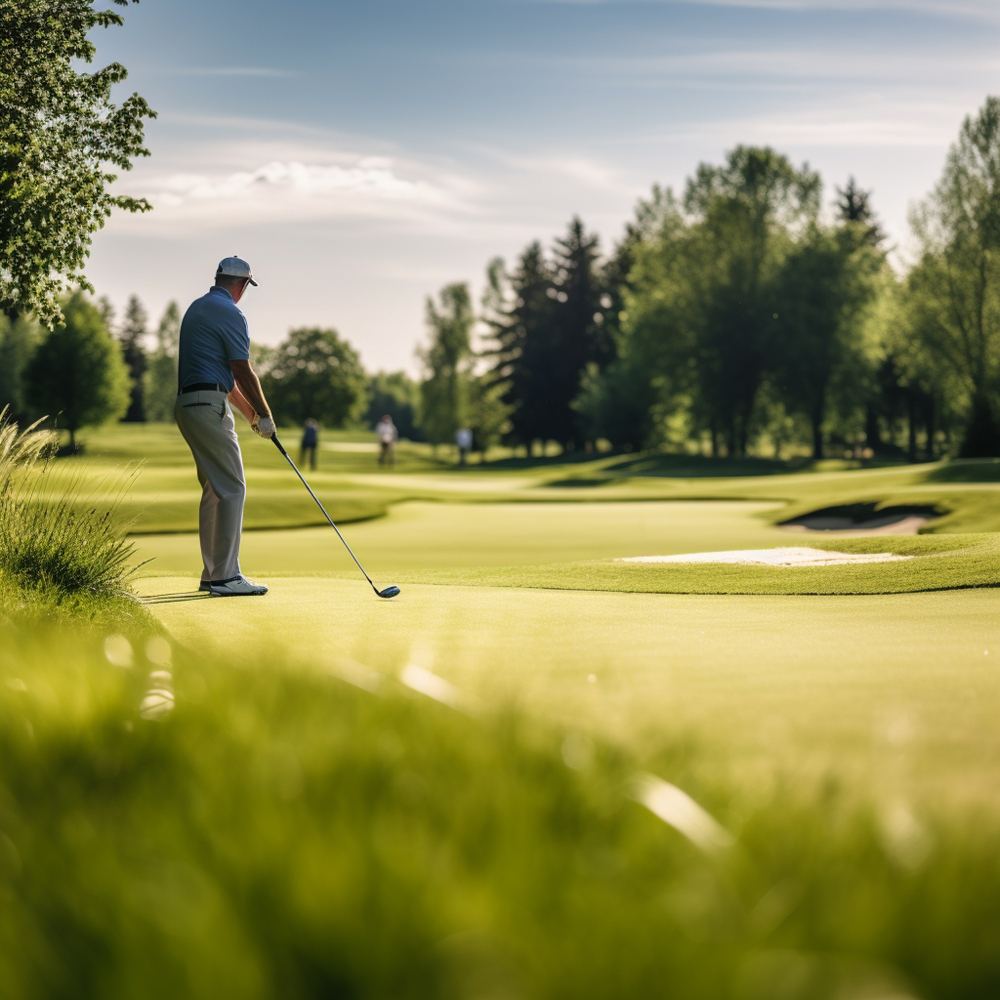
So why play golf?
It is a game that most people can play, at any age and any skill level. You get on the green and start.
Furthermore, it is a social game that is enjoyed by millions of people (66 million of them and counting). You get to walk, be outdoors, socialize and the after game lunch is always well deserved, isn’t it?
Golf Injuries are common
In Canada there are approximately 5.7 millions golfers and in the USA there are at least 24 million. Since the pandemic, virtual golf is on the rise. According to some surveys, 40% of golfers have never been on a golf course and only play in simulators!
No matter where you play, the injuries can arise when you least expect them.
We can help: just call us to get started

So here are the top 5 golf injuries to keep an eye on (and get physical therapy to avoid!)
- Wrist Pain (Tendonitis)
- Golfer’s Elbow (Medial Epicondylitis)
- Low Back Pain (Lumbar Strain, most common injury according to PubMed Article)
- Knee Injury
- Shoulder Injury (labral tears: torn cartilage)
Golf injuries are so common that statistics suggest it is more ‘dangerous than rugby’ (source: golfsupport.com) But don’t worry, most of these injuries are avoidable. Most often, the sustained injury is from overuse (professional golfers) and incorrect swing (amateur golfers)
If you have lingering golf injuries read about our physiotherapist’s reference guide below to get better, so you can play your best golf game yet. Thus, we have paired together the avoidable golf injury with a recommended exercise, to get you started on your prehabilitation journey (prehab=improving strength, stability and mobility BEFORE injury onset).
You can benefit by training safely in our Physiotherapy Lab & Gym: just call us to get started
Use our handy List of Exercises at the end of this post, as a warm-up guide before your next tee off. Most importantly, remember to always, ALWAYS warm-up. In the event that you are new to golf and just getting started: read this nifty guide on what you need to know as a newbie.
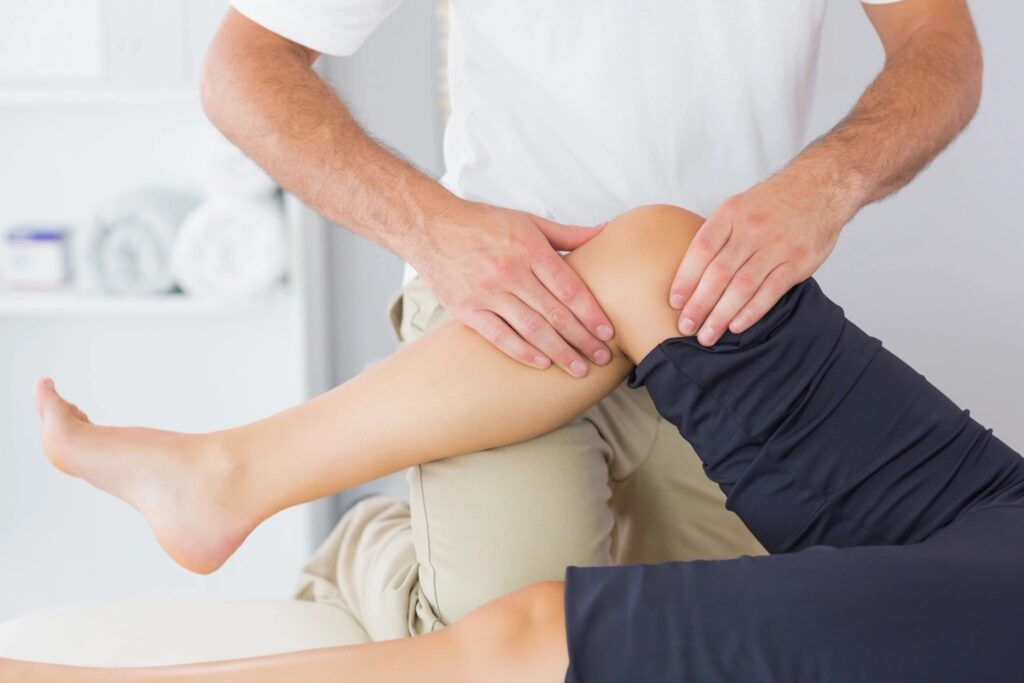
Physical Therapy and Prehabilitation lets you:
Maximize your results. Improve your golf score.
Swing with confidence. Ace the back 9. Play all season.
5 Golf Injuries You Can Avoid:
1. Wrist Pain – Tendonitis
According to American Society for Surgery of the Hand, tendonitis (pain in the wrist) can develop in “Golfers who play too much or too aggressively…irritation can occur on either the front or back of the wrist. It is more common in the leading hand (left hand for a right-handed player and vice versa).”
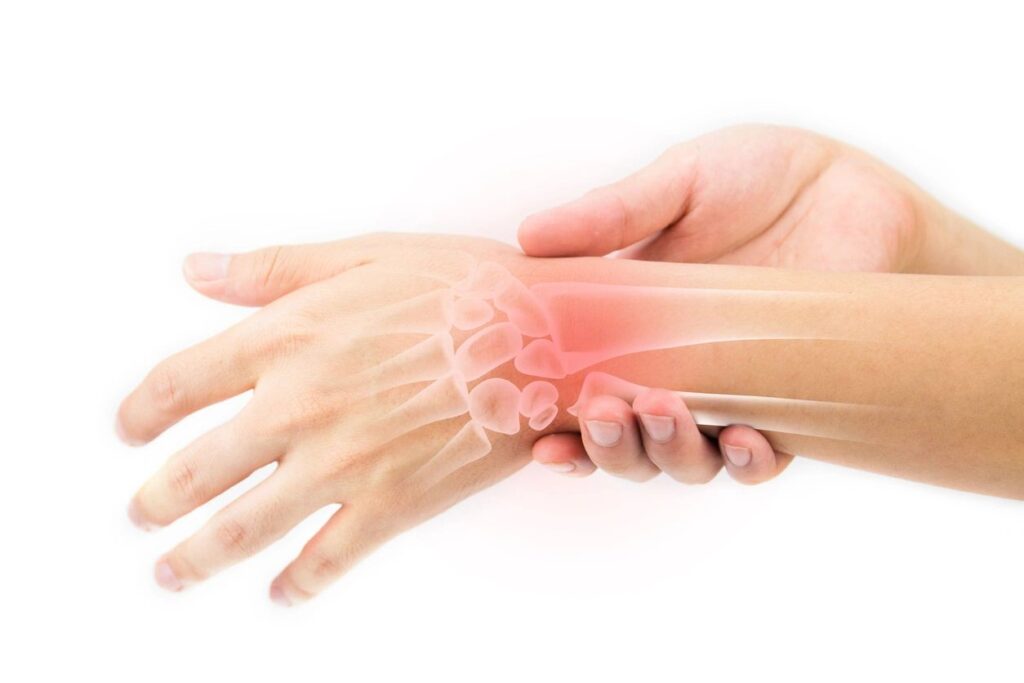
SYMPTOMS
- Pain on the front or back of the wrist or forearm
- Tenderness to touch
- Worse pain with gripping, flexing, or extending wrist
WRIST INJURY PREVENTION
- Increase your overall conditioning (sport practice time and working out time)
- Warm-up minimum 10 minutes
- Use golf-specific exercises/program to improve coordination, stamina, core strength, stability & mobility
2. Golfer’s Elbow (Medial Epicondylitis)
Medial epicondylitis is pain on the inside of the elbow caused by irritation of the tendons in the area. Specifically, this pain and inflammation develops in the tendons connecting your forearm and elbow.
Additionally, overuse, insufficient warming up of your joints and muscles can literally lead to micro-tears in your tendons. Yes, this is preventable. Often, Golfer’s elbow results from overuse and poor technique or fatigue.
Source: Cleveland Clinic
SYMPTOMS
- Pain in forearm, wrist or on the inside corner of the elbow (often right on the boney prominence)
- Pain when making a fist
- Tender to touch
- Decreased grip strength
- Worse pain when gripping or lifting
- Tingling in the hand
- Numbness felt in the hand
- Lifting may be worse with a straight elbow than a bent elbow
GOLFER’S ELBOW INJURY PREVENTION
- Pay attention to your wrist and forearm during your warm-up drills
- Improve your grip strength with conditioning programs and/or physical therapy
- Improve your grip and swing technique with training, coaching and driving range practice
- Build in time for stretches and breaks between rounds and especially before you hit the back nine
3. Low Back Pain (Lumbar Strain)
“A strained lower back is the most common golf injury, and the one most likely to shorten a career. The modern power swing is all about the rotation of the pelvis through the shot. The torque this creates between the pelvis and the lumbar spine pulls the ligaments, tendons and muscles in that area.
Also, the shearing effect can wear away the discs between the vertebrae in the lumbar spine, leading to disc disease”. Source: golfdigest.com
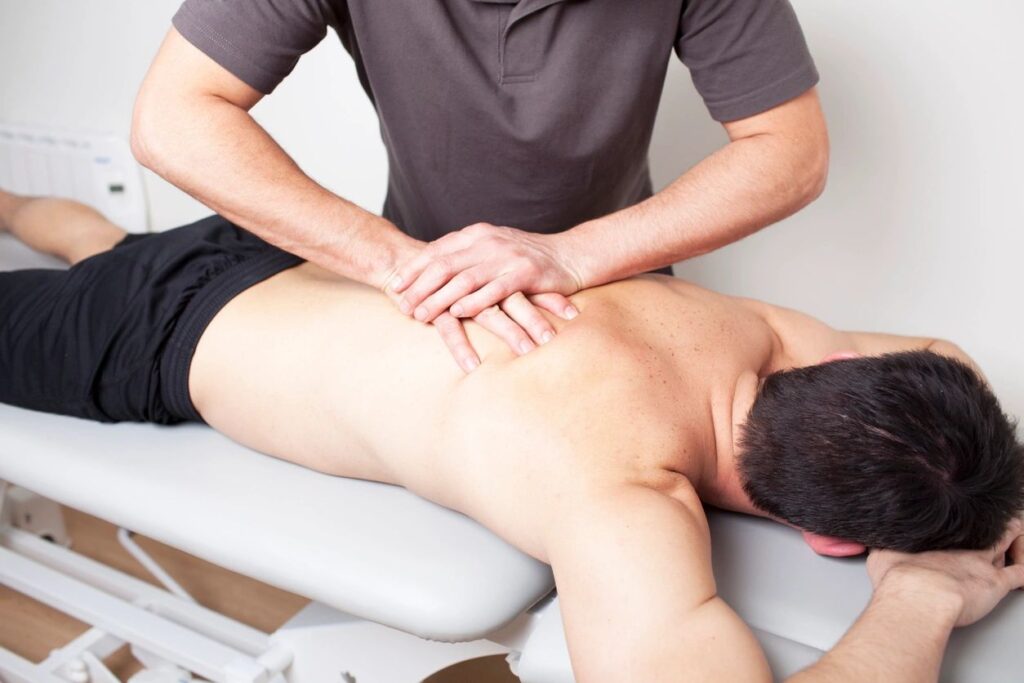
SYMPTOMS
- Dull, achy pain in low back
- Stinging or burning pain in low back
- Radiating pain moves from the low back to the back of your thighs
- Pain may be felt in lower legs or feet
- Pain AND numbness or tingling (sciatica)
- Muscle spasms in low back, hips or pelvis
- Pain worse after prolonged sitting or standing
- Difficulty moving from sitting to standing or walking
Source: Spine Health
LOW BACK PAIN INJURY PREVENTION
- Improve flexibility in hips, upper and middle of spine (physical therapy is a perfect tool for this)
- Practice better posture (sitting and walking)
- Walk daily (walk instead of using a golf cart)
- Stretch after a round of golf, especially the glutes, legs and in particular hamstrings
- Strengthen your core muscles (We can all use more core strength!)
- Lift heavy golf club bags better (bend your knees and use legs/glutes to support your lift, NOT your back)
Source: Health UCDavis
“Teaching today says to create separation between the rotation of the pelvis and the rotation of the trunk, especially on the downswing, where more separation means more speed.
Unfortunately, the problem is many golfers can’t do that without a lower-back injury. Instead, try to turn everything in unison; the hips and shoulders should rotate back together and through together. You might sacrifice some power, but you’ll save your back and stay in the game.” Source: golfdigest.com
Have back pain after a round of golf?
There’s difference between an amateur and professional golf swing and that could be why you have pain.
Did you know that:
- High-handicap (amateur) golfers generate more power in their swing by using their upper extremity strength. This results in an inconsistent golf swing and makes these golfers more susceptible to back injuries.
- Low-handicap (professional) golfers have greater balance and flexibility, which enables them to use their body rotation to generate club speed, thus allowing the upper body to follow through. This reduces their risk of injury. Source: American Academy of Orthopedic Surgeons
4. Knee Injury
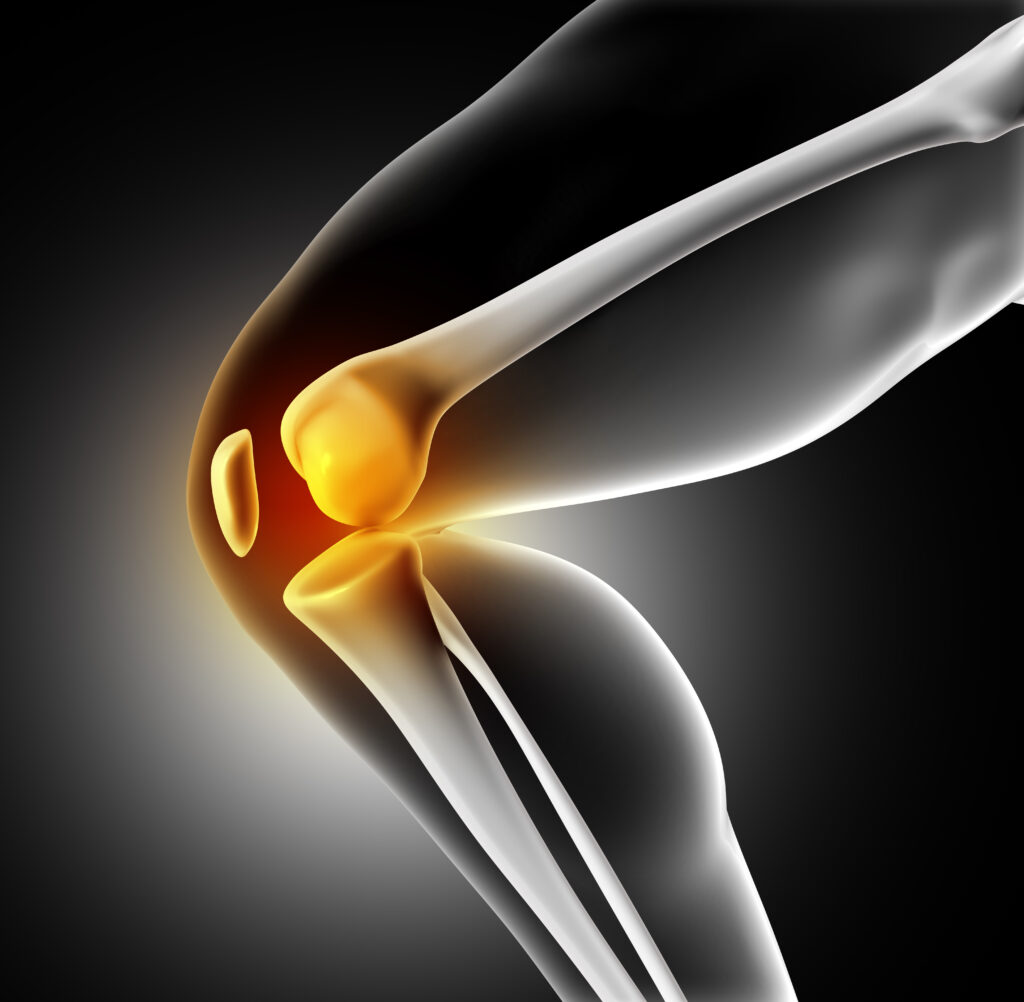
Damage to the menisci in the knee(discs of soft cartilage that act as shock absorbers between the shin and thigh bone), is the most common knee injury in golf. As a result, the damage leads to a meniscus tear. Often times, this occurs over a period of time. It results from a repeated insult to the knee, during the twist on the swing.
Whether you are an amateur or a golf pro, the twist irritates your knee just the same. Another common injury that golfers experience is the rupture of the anterior cruciate ligament, or ACL. Similarly, as in the meniscus damage, a rupture or a micro-tear in the ACL can occur during the load and twist of your golf swing.
“We’re really picking on the lead side, and rightfully so—it takes a real beating when you shift forward to swing through. This results in the inner side of the left knee absorbing a tremendous amount of torque and compression.
Many golfers square the left foot and lock the knee in an internally rotated position, which leads to an increased shearing force on the knee joint. The typical injury is to the medial meniscus and can lead to degeneration of the articular cartilage and arthritis.” Source: golfdigest.com
SYMPTOMS
- Pain in the knee joint
- Stiffness in the knee
- Swelling or Instability in the knee
- Knee is tender to touch
- Decreased strength in knee during workout or even walking
KNEE INJURY PREVENTION
- Improve your golf swing form (practice with a pro, get swing advice)
- Strengthen your legs, especially the quadriceps (they protect your knees, Prehab anyone?)
- Pay attention to your legs and knees during your entire golf game, even when picking up the ball
- Wear proper golf shoes with spikes (the stability they provide can reduce pressure and sliding during a swing)
- Get more flexible. (The more length you have in your hamstrings, glutes and calves, the stronger they can be and the more protected your knee is during all activities)
- Keep active and stay at a healthy weight (If you struggle with this, training and physical therapy in our clinic can help you with this today, just call us to get started)
5. Shoulder Injury (labral tears: torn cartilage)
3 types of tear can occur in the shoulder cartilage:
- Bankart tear: Occurs at the front/lower part of the glenoid (socket portion of the shoulder joint)
- Posterior labrum tear: Occurs at the back of the shoulder joint
- SLAP tear: A superior labrum anterior to posterior (SLAP) tear occurs at the top of the glenoid, extends from the front to the back, where the biceps tendon connects to the shoulder. This is a common injury for athletes such as baseball pitchers and tennis players who move with quick motions with the arm raised over the shoulder. Source: Penn Medicine
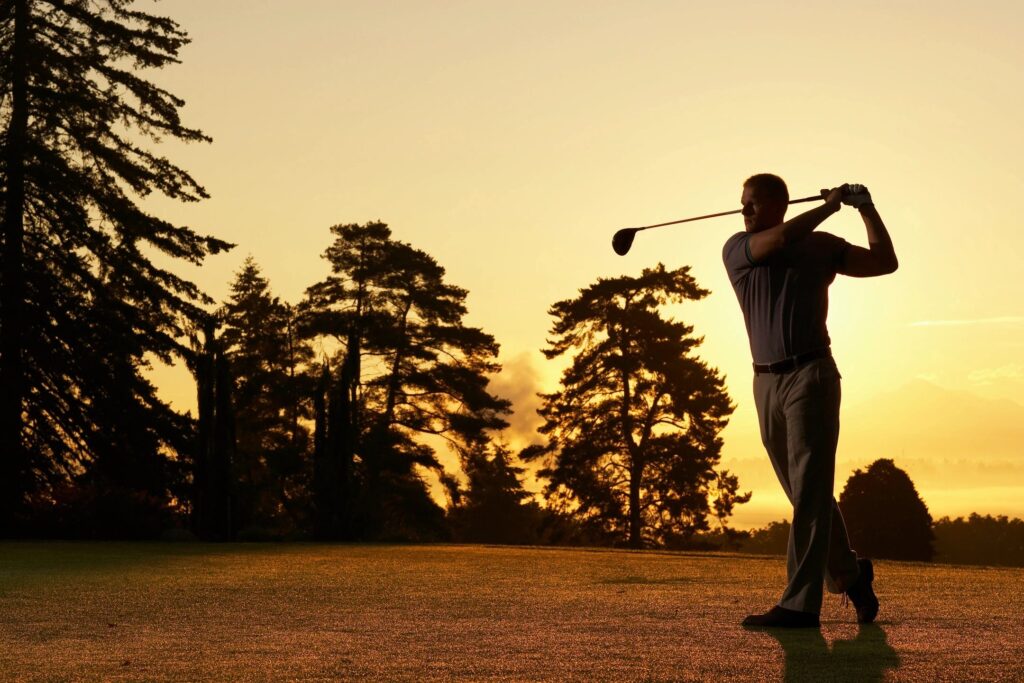
“There are several parts of the shoulder at risk, and the rotator cuff is the granddaddy of them all. But labral tears (torn cartilage) are becoming common and often can be traced to the backswing.
When golfers keep the left arm tight to the chest as they swing back, they can tear the labrum that stabilizes the shoulder joint. This is called a posterior labral tear, and the golfer feels pain in the back of the shoulder.” Source: golfdigest.com
SYMPTOMS
- Shoulder Pain
- Instability in moving the shoulder/arm
- Loss of strength in shoulder
- Loss of range of motion in shoulder
- Popping sound, locking sensation or catching in shoulder joint
- Numbness or overall weakness in arm
- Tingling in shoulder or arm
SHOULDER INJURY PREVENTION
- Warm-up. Warm-up. Warm-up!
- Focus on exercises that target and strengthen your rotator cuff and shoulder blade muscles.
- If you feel shoulder pain: stop, evaluate and get a professional assessment. Rest and get back to the swing when you shoulder feels strong again
- Strengthen your core, your torso, back AND legs (Yes, sounds like repetitive advice from above. But your entire body gets you the winning golf swing, not your arms and shoulders!)
- Cool down. After your golf game, stretch out your arms and shoulders with a couple of exercises. Stretch slowly and breathe for a count of 5 or more on the inhale and exhale. This relaxes the muscles, keeps the circulation flowing and literally lubricates all the muscles and connective tissue so it can repair and get stronger for your next game.
Get physical therapy guidance on shoulder health and achieving a strong golf swing, from our physiotherapist, Devon Jarrett, in our fully integrated physiotherapy clinic and athletic training centre.
“Players who don’t turn well in the backswing tend to pin the left arm across the chest. Turning the upper body can be physically challenging for some golfers; others find it just plain scary, because they feel as if they won’t get back to hit the ball.
A good swing thought is, Turn more, swing less. When your body stops turning back, your arms should stop swinging. Think of swinging your arms with your turn, not with the muscles in your shoulders.” Source: golfdigest.com
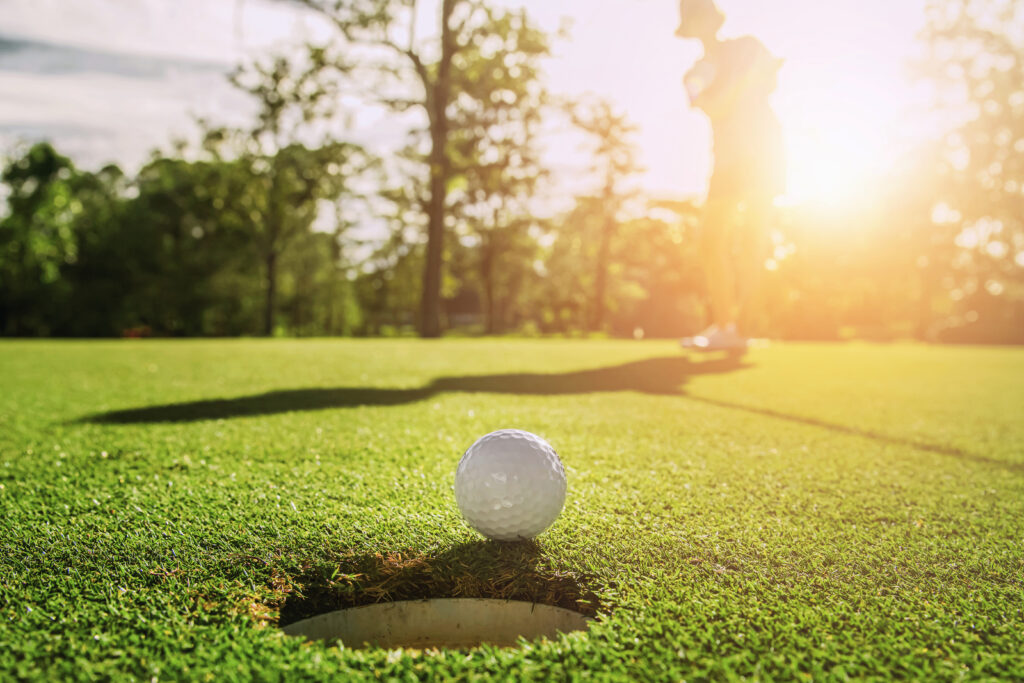
Any list of Golf Injuries You Can Avoid is not complete without addressing the Mind Game.
Every ‘personal best’ game is dependent on good fuel. You must fuel not just your body but also your mind. This is especially true when playing the full course.
Did you know our brain is only about 2% of our body weight, but consumes over 20% of oxygen (and calories!)
Playing beyond your physical limitations.
Using our tips above on preventing and reducing your golf injuries and practicing our recommended prehab drills (see list below) regularly will help more than just strengthen your body and your golf game. These daily practices can improve your mental game. Proper coaching, physical therapy, golf pros, technique visualizations with physical swing practice and training improvements bolster your stamina.
Executing your perfect golf swing with confidence starts in the mind.
You may benefit mid-course, by going back to these tips (in your mind) on the back nine. Sometimes, it’s all about a mental reset. Many a golfer can get stuck identifying patterns playing a hole, that just aren’t there. Also, mental fatigue can set in just like physical fatigue.
Teach your mind and learn a better stroke. Practice drills to minimize golf injuries and you will be in top form for many years to come, pain and injury free. That is our OPR promise to you.
Play your best game this season, all season long.
We can help: just call us to get started
BONUS EXERCISE REGIME TO ADD TO YOUR GOLF TRAINING
Source: PREHABGUYS
- 90/90 Hip Stretch – Dynamic Trunk Rotation
- Hip CARS
- 90/90 Active Hip Rotations
- Kettlebell Handoffs
- Spieth’s Backswing Drill
- Banded Bird dog